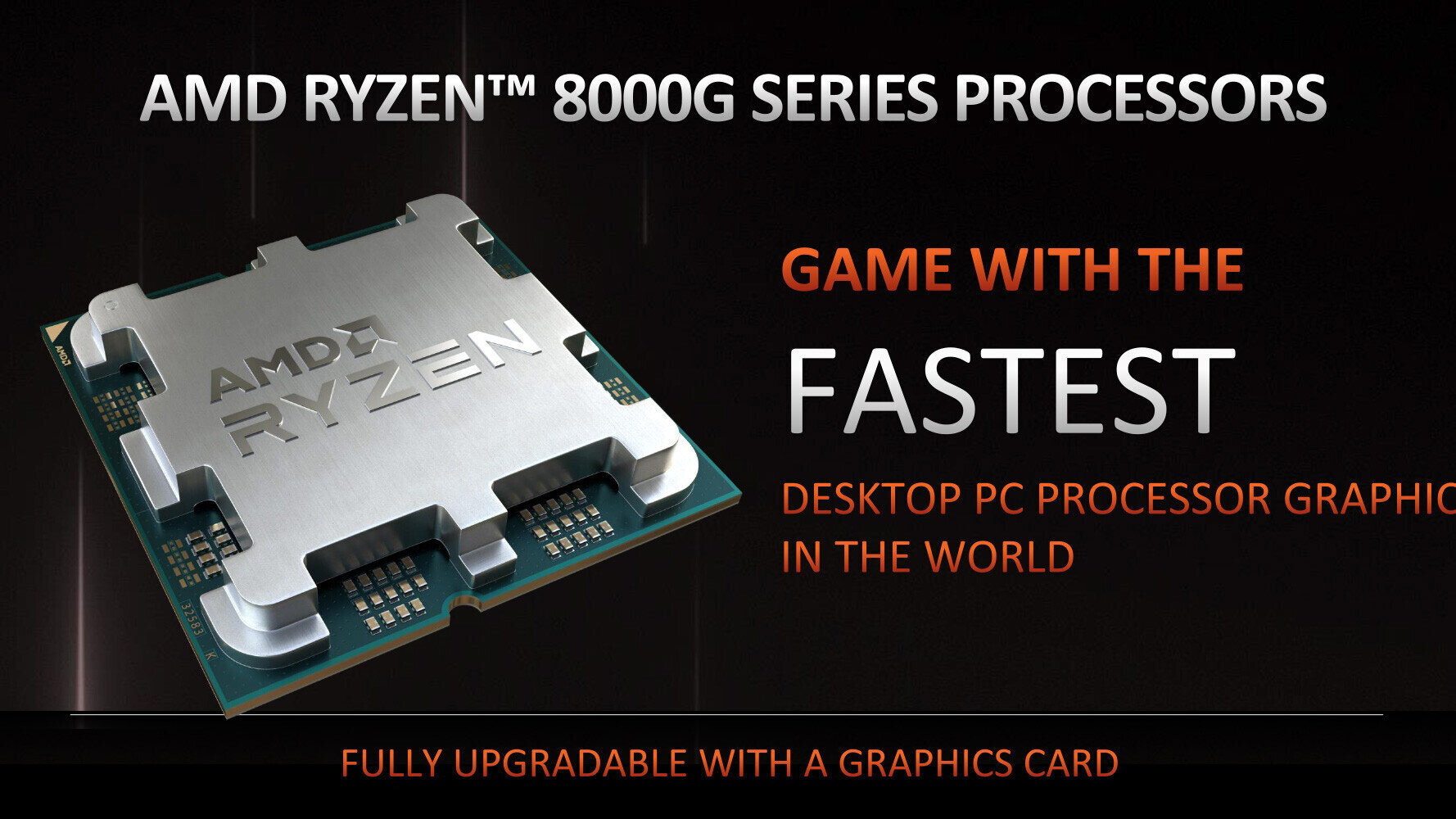
The Ryzen 7 8700G and Ryzen 5 8600G, built on Hawk Point silicon (fabricated at 4nm), include Ryzen AI and are therefore the first APUs to feature a Neural Processing Unit (NPU). The Ryzen 5 8500G and Ryzen 3 8300G, on the other hand, are based on “Phoenix 2 silicon” (which is also manufactured on a 4nm process process). All new APUs use the AM5 socket.
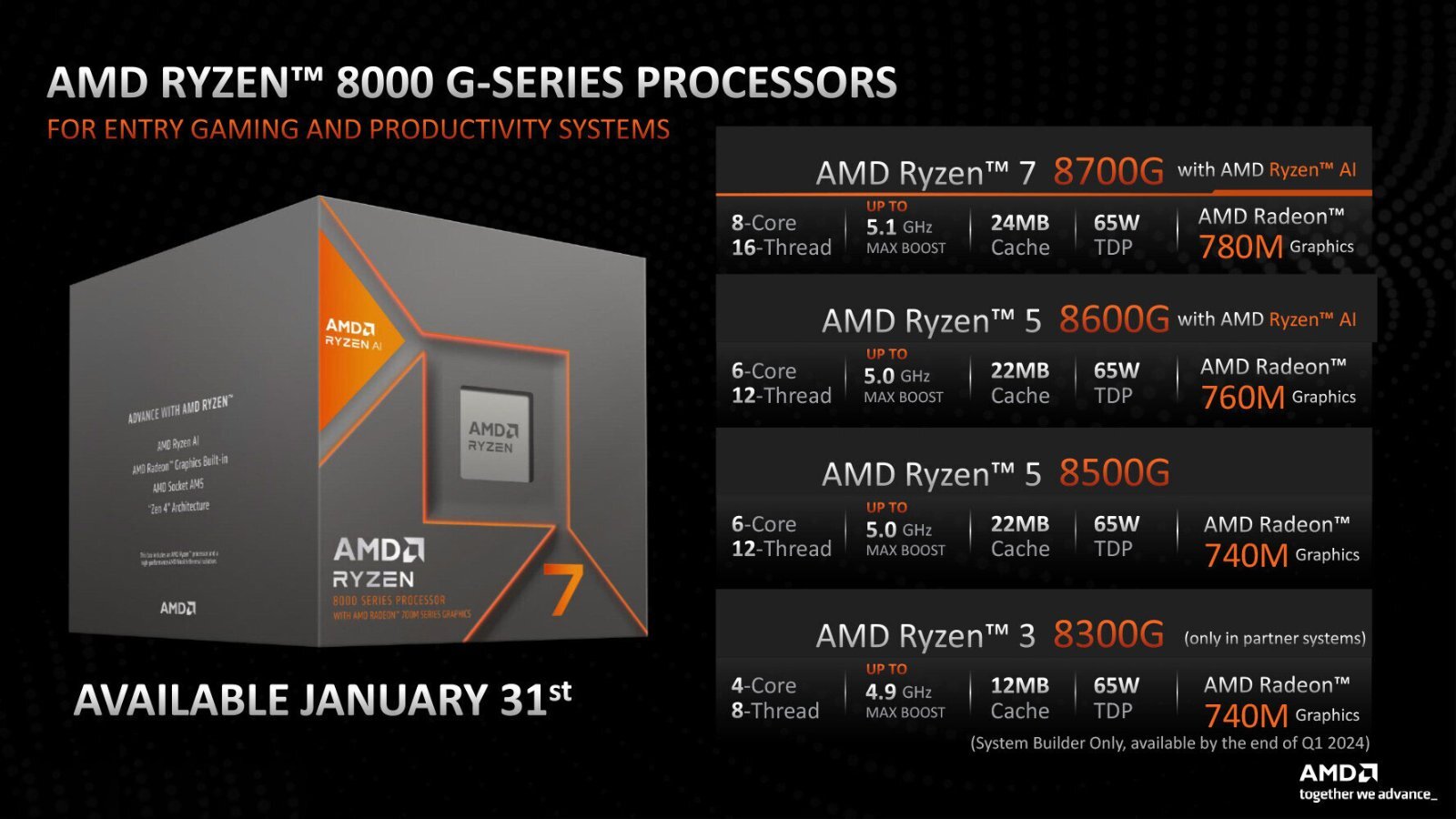
In the case of the Ryzen 7 8700G, we are dealing with a unit that combines in one package an 8-core and 16-thread processor based on the “Zen 4” microarchitecture, a Radeon 780M graphics processor with 12 RDNA3 compute units and neural processing to accelerate Ryzen AI XDNA applications.
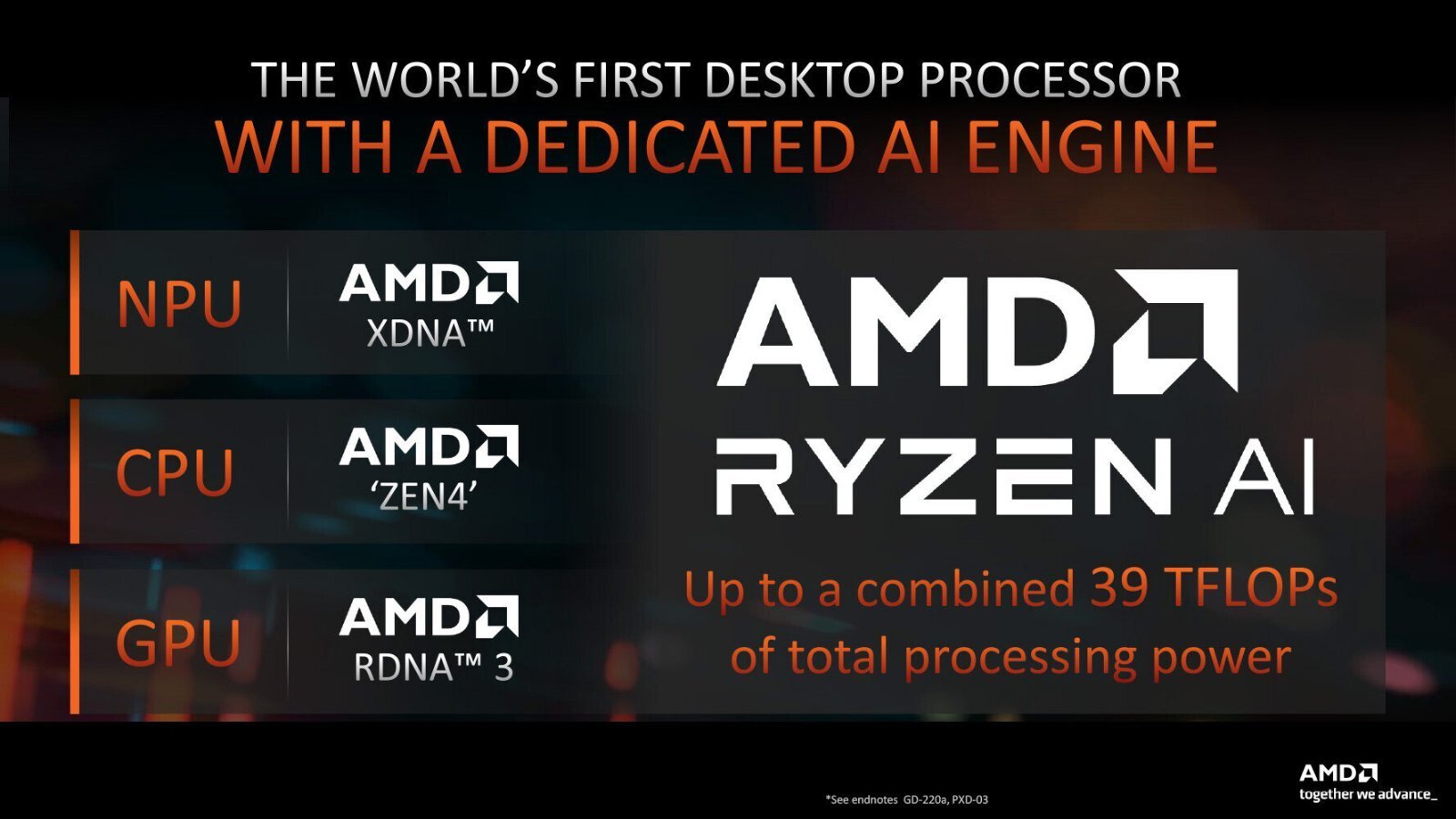
The APU offers combined AI performance of up to 39 TOPS, of which 16 TOPS are coming from the NPU. The 8-core/16-thread processor in the Ryzen 7 8700G APU has a base frequency of 4.20 GHz and a maximum boost frequency of 5.10 GHz. Each of the eight cores has 1MB of L2 cache while they all share 16MB of L3 cache. The Radeon 780M shows an operating frequency of 2.90 GHz and includes 12 compute units with 768 stream processors, 24 AI accelerators, 12 ray tracing accelerators, 48 TMUs and 32 ROPs. The processor has a TDP of 65W and comes with a Wraith Spire cooler.
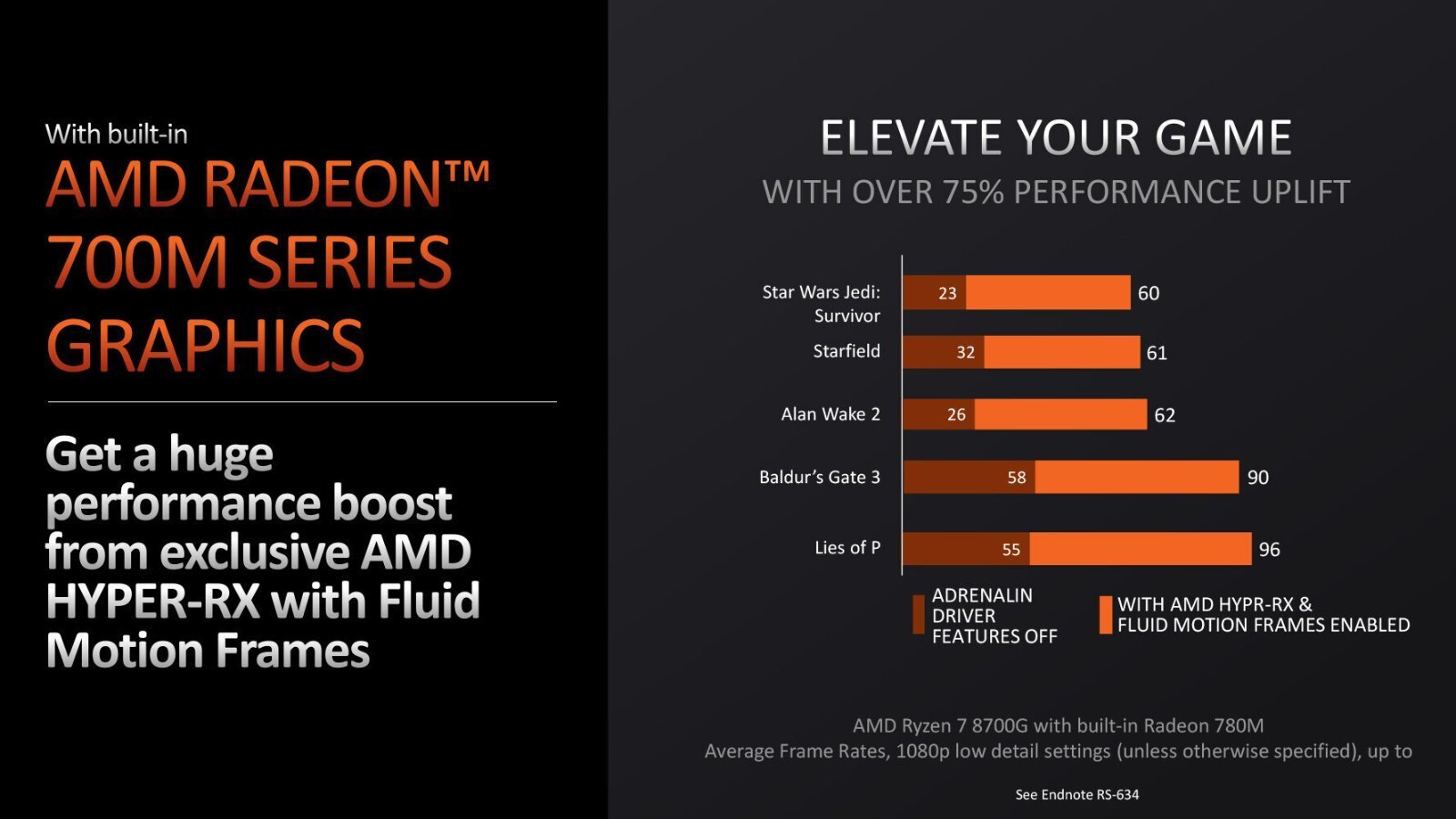
The overclocked Ryzen 5 8600G processor built on the same “Hawk Point silicon” includes a Zen 4 architecture processor with 6 cores and 12 threads, which operates at a frequency of 4.35 GHz with a boosted operating frequency of up to 5.0 GHz. Each of the six cores has 1MB of L2 cache while all cores share 16MB of L3 cache. The integrated graphics processor is the Radeon 760M that integrates 8 compute units (CUs), which correspond to 512 stream processors, 16 AI accelerators, 8 Ray Tracing accelerators, 32 TMUs and 16 ROPs. The operating frequency when boosted can reach 2.80GHz. The Ryzen 5 8600G APU features the exact same NPU as the Ryzen 7 8700G with identical performance up to 16 TOPS. The TDP is also 65W and comes with a Wraith Spire heatsink.
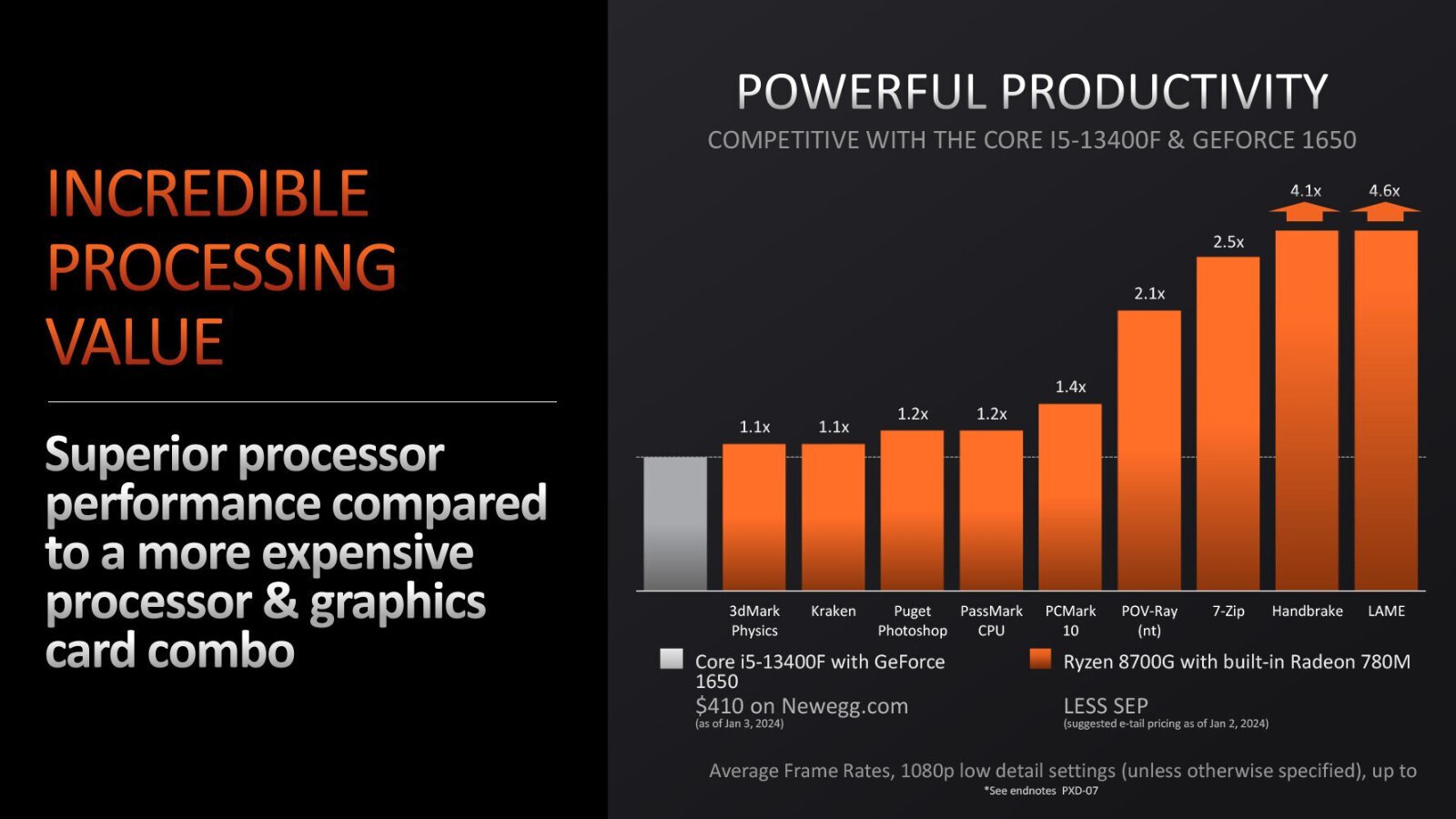
The Ryzen 5 8500G and Ryzen 3 8300G are based not on “Hawk Point” silicon (which takes up 178 mm²) but on the smaller “Phoenix 2” (137 mm²) and do not include a Neural Processing Unit (NPU). The Ryzen 5 8500G has a 6-core, 12-thread processor, but two of those cores are from the “Zen 4” architecture and the other four are from the “Zen 4c” architecture. Each of the six cores has a 1MB L2 cache while they all share a 16MB L3 cache (note at this point that we are dealing with one or two homogeneous caches and not two CCXs each with an L3 Its own 8MB cache. The Ryzen 5 8500G APU has a base frequency of 3.50 GHz and a maximum boost frequency of 5.00 GHz (in the case of Zen 4 cores, we don't have official data on Zen 4c cores yet). A Wraith Stealth heatsink is included in the package.
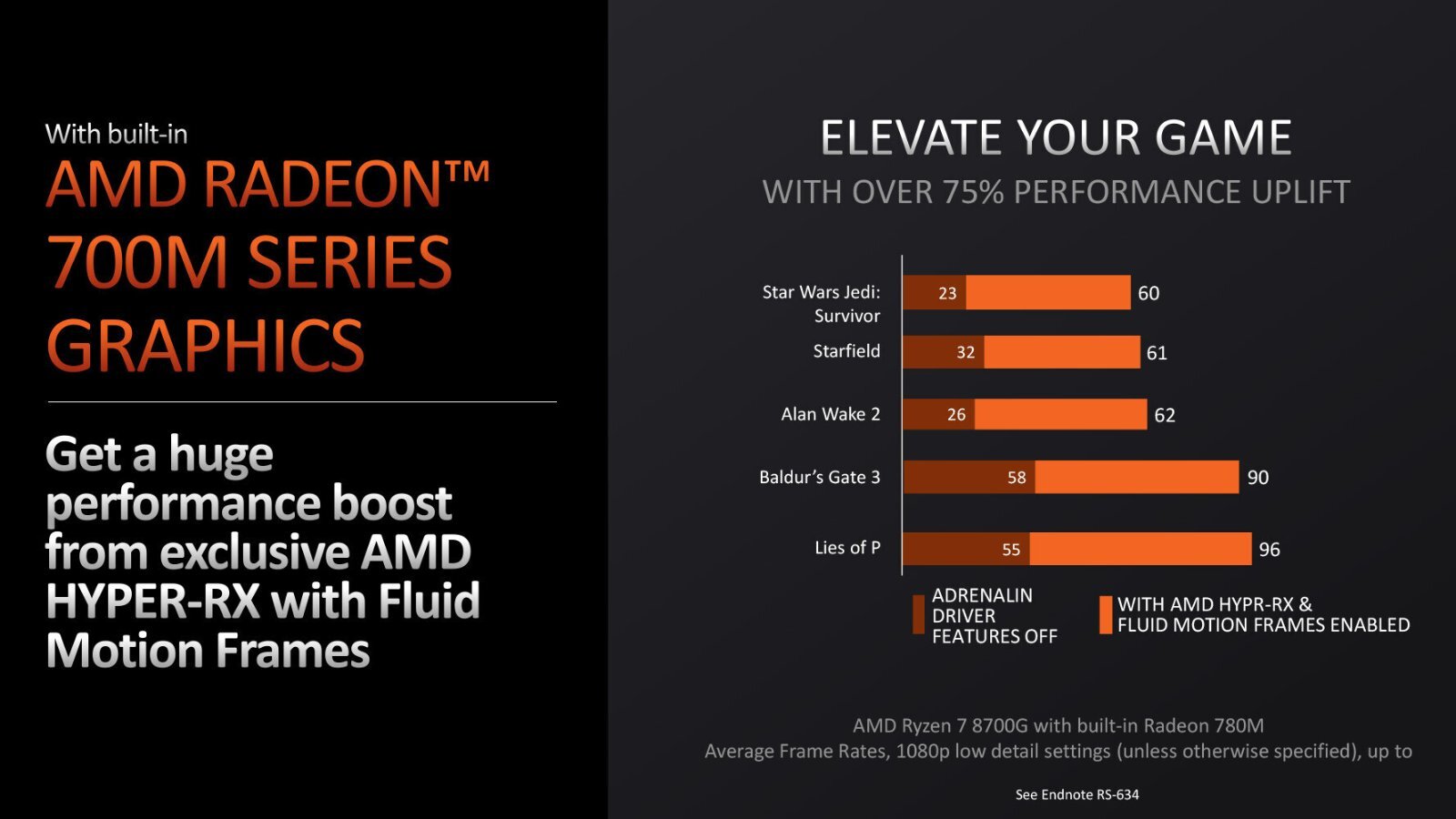
The Ryzen 3 8300G APU won't officially hit the market, but it is an entry-level unit that will only be available to AMD partners and OEMs selling “off-the-shelf systems.” The internal processor has 4 cores but only one of them is from the Zen 4 architecture and the rest are from the Zen 4c architecture. The processor's base frequency is 3.40 GHz and the maximum boost frequency is 4.90 GHz (for Zen 4 core architecture). As for the integrated graphics processor, the Ryzen 3 8300G has a Radeon 740M unit (with an operating frequency of 2.50 GHz) which is also present in the Ryzen 5 8500G. The two APUs have the same TDP as well, at 65W. As for the Ryzen 3 8300G we have no information on the cost, however we have learned that the Ryzen 7 8700G, Ryzen 5 8600G and Ryzen 5 8500G APUs will cost $329, $229 and $179 respectively and will be released on January 31st.
-
8

“Avid problem solver. Extreme social media junkie. Beer buff. Coffee guru. Internet geek. Travel ninja.”






More Stories
In Greece Porsche 911 50th Anniversary – How much does it cost?
PS Plus: With a free Harry Potter game, the new season begins on the service
Sony set to unveil PS5 Pro before holiday season – Playstation